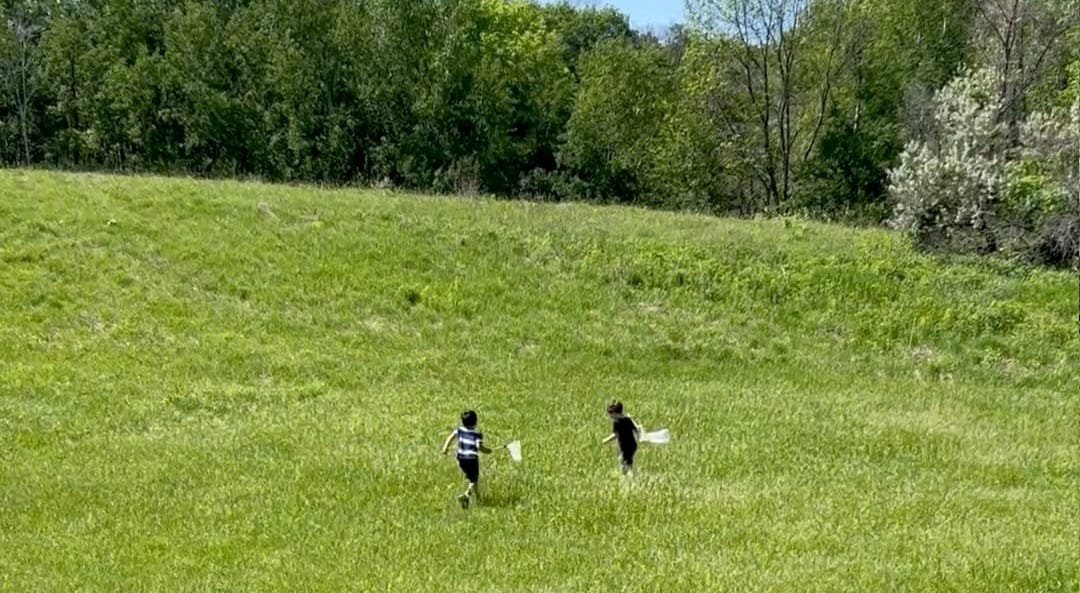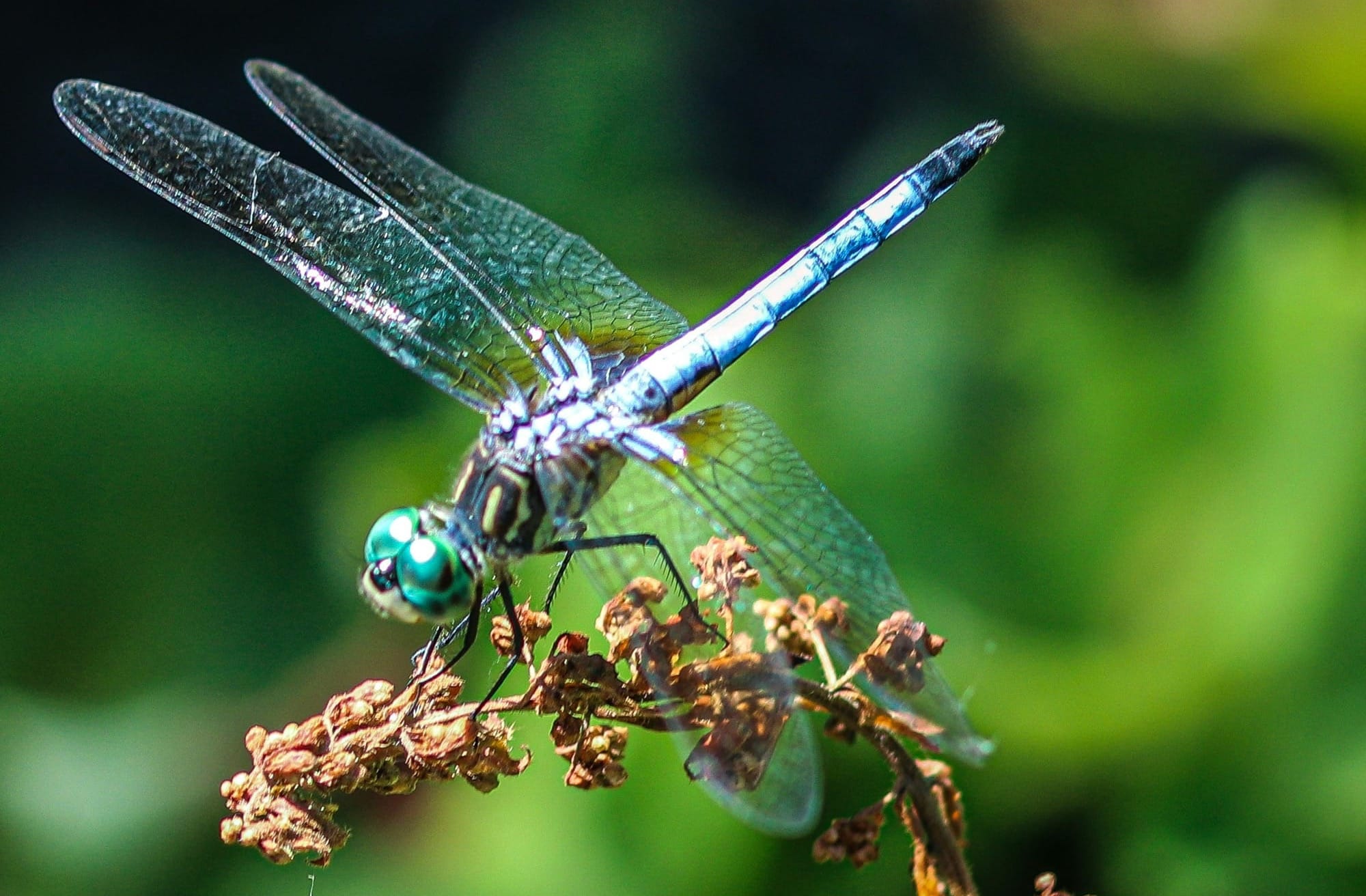Bug nets!

It can be fun to share a skill with your grandkids. Another idea is to try something new! Recently our new thing was netting insects.
The grandkids and I got a chance to try this for free, because not far from our place there is a state park (Hyland Lake Park Reserve) that features a nature center (Richardson Nature Center). that lets you check out insect-netting kits. If you don’t have a nearby resource like this, insect netting is still a low-cost activity, considering the re-use possibilities—a net for young kids costs about $15, a bigger one for older kids a bit more. (Along with being humane, net and release saves money—no preserving equipment needed!)
Off we went with our kit to a patch of short-grass prairie. And off the kids ran, wildly swinging their nets. Hard to say what they enjoyed more—catching the occasional bug, or the free running through the grass. Certainly they were proud of their list:
• Ant
• Dragonfly
• Moth
• Beetle
• Inchworm
• Damselfly
• Toad (not a bug, obviously, and not caught with the net.)
Free is always good! Other legs up we had in starting this project were that the grandkids and I were quite familiar with the territory, as I have been driving them to a weekly nature class at the park for the past 9 months (and walking the area while they were in class). And we were lucky enough to run into one of their teachers, who directed us to a good area for our hunt and gave us instructions about how to capture and observe the insects without hurting them—a point that was very important to me. From all this, here are some tips if you want to try bug netting.

Simple equipment
The basic equipment for catching bugs is simple:
• A net and a clean, clear plastic jar with a lid—the park’s kit contained what appeared to be a peanut-butter jar.
• An insect net. These are more specialized—they need a long-enough handle (but not too long for the kids), a wide-enough opening (but not too big for the kids to manipulate), and a fabric netting that is gentle, flexible, and light. The nets in the kit had handles about 18” long and net diameter about 10”, and a net length about 18”. This is on the small side for an insect net, but worked well for 5 year olds. (This one, which is similar to what we used, has an 11” diameter, 19"-deep polyester net bag, and 18" handle.) Older kids and adults can use a bigger net like this one (the copy at the link suggests grade 7 and up).
• A notepad for recording your catches.
Tips from us—and from experts
• Do your insect hunt somewhere familiar, so you have some sense of where the bugs might be and some sense of hazards (poison ivy, traffic, woodchuck tunnels, etc.).
• If possible, make the “somewhere” a spot with more than one kind of habitat (shade, sun, woods, prairie, pond), to improve your chances of netting a variety of bugs. But for starters, there are probably plenty of bugs in your local park.
• Learn a little bit (in my brief experience, a little is enough!) about technique, to help with catching the bugs, not hurting the bugs, and staying safe yourself (some bugs bite or sting!) The main thing we learned in advance is that to take a butterfly out of the net, you should gently pinch its wings together above its body, so the wings are in the typical butterfly resting position. Here’s a video that offers these and other bug-catching tips. Having experienced an escaped damsel fly (wow, they are fast!), I particularly appreciate the advice from the video about how to get the bugs in the jar: Bug in net. Net opened gently into jar. Screw the jar lid over the net. (Take a look at the video—much easier to grasp that way!)
• But! Don’t get too hung up on technique. We had no lessons in technique other than the butterfly advice, and the kids definitely weren’t using the swishing technique in the video (link above), yet they caught dragonflies and damselflies, which are notoriously tricky to catch because they are so fast.
• Have some bug identification information available. For 5-year-olds, getting as far as dragonfly vs. damselfly, moth vs. butterfly, fly vs. bee (see advice about leaving bees alone) is enough. Obviously, endless learning and sophistication in identification and knowledge about the insects can continue if the child develops an interest.
• Please use common sense about catching stinging insects. Why risk getting hurt?
• TICK CHECK. And other tick protection, too, as recommended for your area. The wily arthropods may hitch a ride while you are busy with other bugs. (Please check the recommendations before you head out—tick-borne diseases are potentially devastating.)

Teaching respect for life
Some people catch bugs to make bug collections, which of course involves killing them. My personal choice is to release them, because insects are probably sentient beings. Whatever your choice, you can talk with the grandchildren about being respectful and humane, and work out together what approaches to this activity work for you, the grandkids, and the bugs.